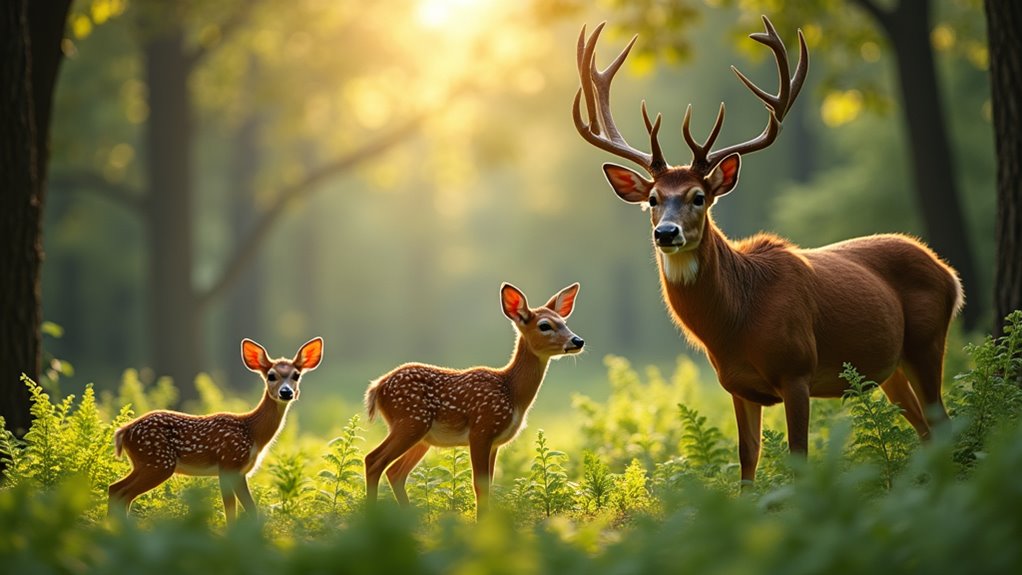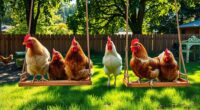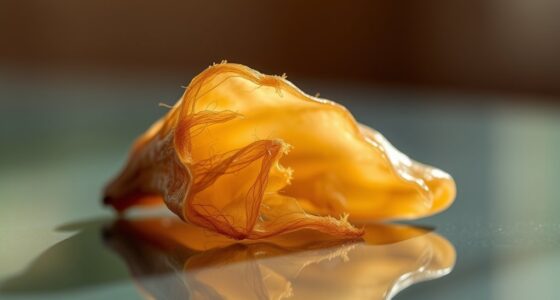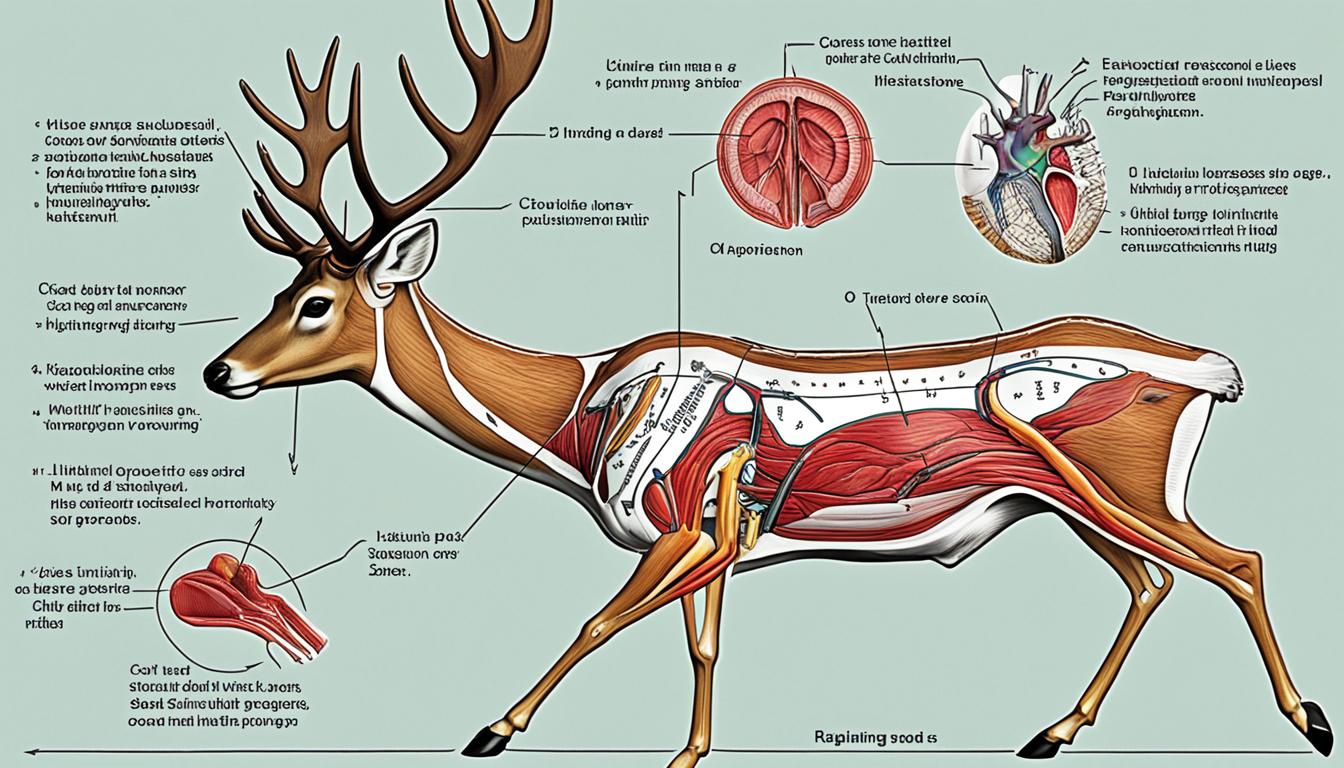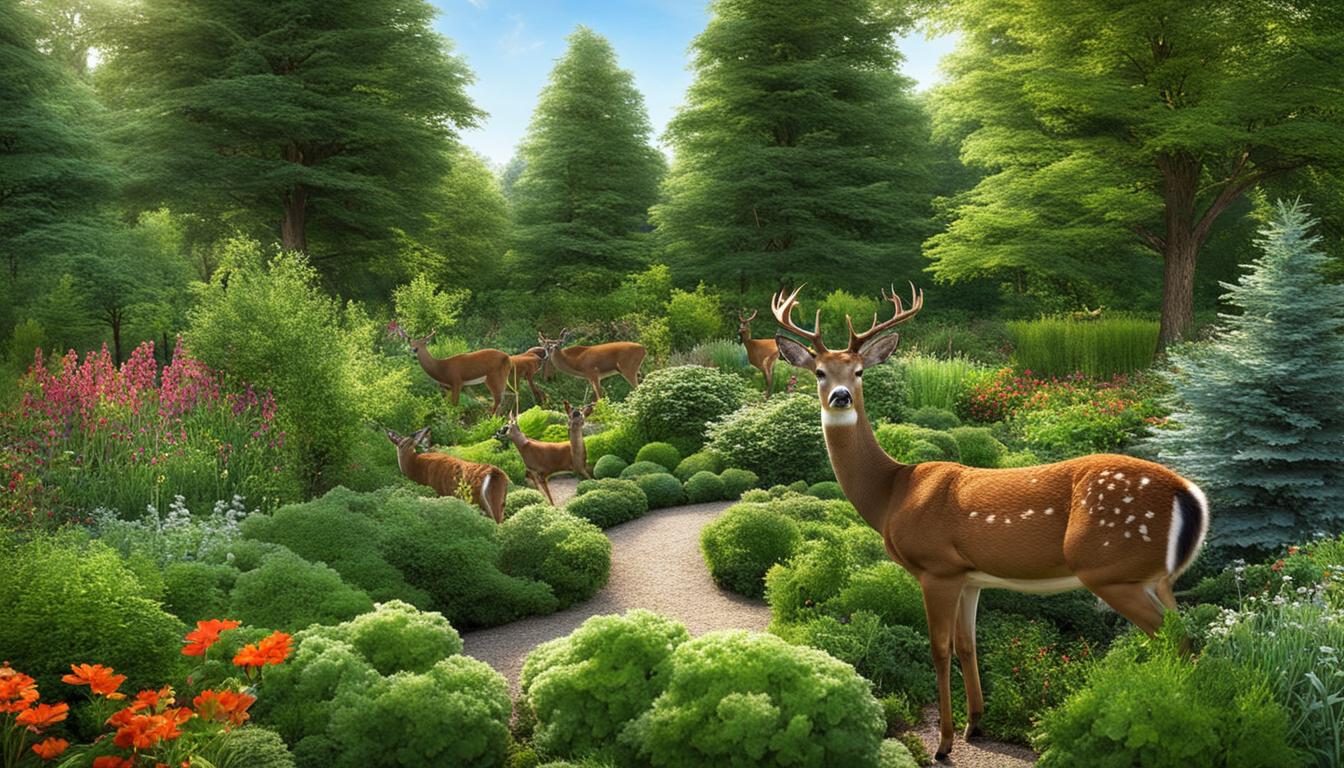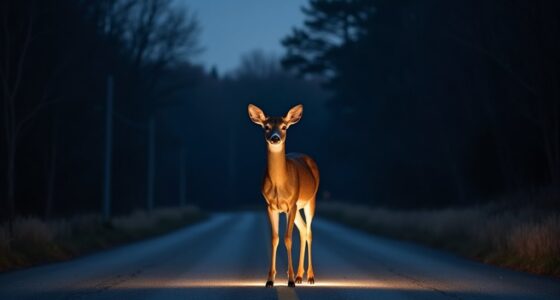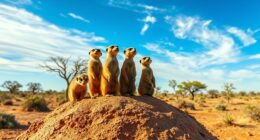The life cycle of a deer begins when you’re a vulnerable, spotted fawn hiding in forests or meadows, relying on your mother for safety and nourishment. As you grow, your legs strengthen, and you start exploring, learning to find food and avoid predators. Eventually, your spots fade, and you gain independence, developing features like antlers if you’re male. To see how these changes shape the deer’s journey from youth to full maturity, there’s more to uncover.
Key Takeaways
- Deer start as vulnerable spotted fawns relying on camouflage and mother’s protection in dense forests or meadows.
- As they grow, they explore, strengthen their legs, and learn to find food while avoiding predators.
- Coat spots fade, signaling readiness to venture further and develop independence in their habitat.
- Males develop antlers during maturation, used for mating displays and establishing dominance.
- Fully mature deer are capable of self-defense, but remain vigilant against predators throughout their life cycle.

Have you ever wondered how a deer grows from a tiny newborn to a graceful adult? It all begins with a vulnerable fawn, born in the safety of its mother’s chosen deer habitat. These habitats, whether dense forests, open meadows, or mixed woodland, provide the essential cover and resources a young deer needs to survive. Right after birth, the fawn is equipped with a soft coat of spots, which help it blend into the dappled light of its surroundings. During this early stage, the fawn is incredibly dependent, nursing frequently and staying close to its mother for protection. Its primary concern is avoiding deer predators like wolves, coyotes, mountain lions, and even humans hunting in some areas. These predators are always on the lookout for weak or isolated young deer, so survival depends heavily on staying hidden and remaining alert.
As the fawn grows, it gradually becomes more mobile. Its legs strengthen, and it begins to explore the surrounding environment, learning how to find food and recognize threats. The deer habitat plays an essential role here, offering a mix of cover for hiding and open spaces for grazing. During this stage, the young deer’s camouflage continues to be indispensable, especially when predators are nearby. The mother stays vigilant, often remaining nearby to defend her young if danger approaches, but she also teaches her fawn how to stay safe. Over time, the coat loses the spots, and it begins to resemble a miniature adult. This change signifies its readiness to venture further from its mother, gradually gaining independence. Additionally, deer habitat quality significantly influences their survival and growth during these stages. Moreover, maintaining healthy habitats is crucial for supporting the entire biodiversity of the area, benefiting many species beyond deer. It is also important to note that conservation efforts can help preserve vital deer habitats amidst increasing human development.
As the deer matures into a juvenile, it starts to develop the physical features of an adult buck or doe. Males, or bucks, grow antlers, which will eventually become impressive displays during the rutting season. The antlers are a sign of strength and dominance, playing a role in mating rituals. During this period, the deer’s ability to evade predators improves, but it still must remain cautious, especially during the vulnerable times when it’s young or distracted. The deer habitat continues to influence its life, providing the resources needed for growth and the cover that helps it escape from threats. Additionally, understanding the life cycle of deer can deepen appreciation for their survival strategies and habitat needs. Ensuring their habitat remains intact is vital for the conservation of not only deer but also many other species sharing the same environment.
Eventually, the young deer reaches full maturity, becoming a majestic buck or a graceful doe. At this stage, it’s capable of defending itself and establishing its place within the herd. But even as a full-grown adult, the threat of predators remains, and vigilance never truly ends. The journey from a spotted fawn to a majestic buck is a proof of the delicate balance of survival strategies, the importance of a suitable deer habitat, and the constant threat posed by natural predators. You can witness this incredible transformation by understanding the intricate stages of a deer’s life cycle and the environment that shapes it.
Frequently Asked Questions
How Do Deer Communicate With Each Other Throughout Their Life?
You might wonder how deer communicate throughout their lives. They use a mix of deer vocalizations, like grunts and snorts, and body language, such as ear and tail movements, to share information. When alert or threatened, they alert others with vocal signals. During mating season, bucks roar and stomp to attract does. This combination of sounds and gestures helps deer stay aware of their surroundings and maintain social bonds.
What Are the Primary Predators of Deer at Each Life Stage?
Imagine facing a relentless predator at every turn! As a tiny fawn, hawks and foxes threaten your survival, using swift predation tactics to catch you off guard. As you grow into a young buck, wolves and mountain lions become your biggest enemies, adapting their predation tactics to hunt smarter. Your deer habitat adaptation becomes vital—you must stay alert, blend into surroundings, and outsmart predators to survive each perilous stage of life.
How Does a Deer’s Diet Change as It Matures?
You might notice that as deer age, their dietary shifts become more pronounced. Young fawns primarily rely on milk, but as they mature, their aging dietary needs shift toward a diet rich in grasses, leaves, and shrubs. This progression allows them to meet the changing nutritional demands of growth and energy. Your understanding of these dietary shifts helps you appreciate how deer adapt to their environment throughout their lives.
What Environmental Factors Influence a Deer’s Growth?
You should consider that environmental factors greatly influence a deer’s growth. Habitat requirements, like access to food, water, and shelter, are essential for development. Climate effects, such as temperature and seasonal changes, also impact their health and breeding cycles. When these factors are favorable, deer grow stronger and healthier. Conversely, harsh conditions can stunt growth or reduce populations. Your understanding of these influences helps explain how deer adapt and thrive in different environments.
How Long Does Each Stage of a Deer’s Life Typically Last?
Imagine a clock ticking, each hour representing a deer’s life stage. You’ll see that fawns nurse for about 8 weeks, then grow quickly as they explore. Juveniles last around a year, while the progression to a mature buck occurs over 2-3 years, with antler development stages unfolding gradually. Deer mating behaviors peak annually, typically in fall, marking the start of their adult life phases.
Conclusion
As you watch a young fawn grow into a majestic buck, you realize the incredible journey of resilience and hope it embodies. Imagine a small, struggling fawn rescued after harsh winter storms, now standing tall and proud. This transformation reminds you that, with patience and care, even the tiniest beginnings can lead to greatness. Witnessing this cycle inspires you to appreciate life’s enduring beauty and the strength found in every stage of growth.
